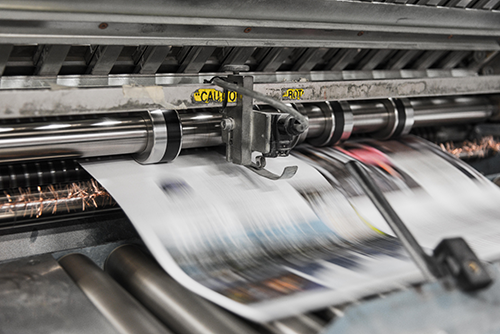Every year, Ooligan Press publishes a book in our OpenBook Series that is sustainably printed as part of our ongoing commitment to environmentally conscious publishing. One of the components of this process is conducting an environmental audit on the printing, which is then written up and included in the front of the book for readers to see. The importance of sustainable publishing has been frequently expounded upon both by the publishing industry at large and by Ooligan Press itself, so much so that to say “sustainable publishing is crucial to our planet’s future” is a well-known fact. What many may not know, however, is the determination process by which a book is published environmentally. Namely, the audit performed on the printer to ensure the most sustainable practices and resources were used during the printing of the book.
An environment audit is, as the name suggests, an assessment of the printer’s environmental practices. As a designer, you may be involved in the gathering of this information, depending on the press you are working for. Before an audit is performed, bid requests must be sent with the specification of environmentally friendly processes and resources to various printers, which then draw up a quote for the publisher. Once a printer is chosen, the audit begins.
The information gathered is detailed and manifold—from quantities used to product brand names—and includes specifications on everything the printer uses in the printing process:
- Cover paper
- Text paper
- Ink
- Binding glue
- Lamination for the cover
- Brand and model of press the project will be run on
- Chemical wash used to clean the press
- Sheet size of the paper
- The quantities (in weight) of each of the applicable items above
When the information above is gathered—and this may require multiple emails—the person conducting the audit researches the companies who manufacture the resources being used and gathers the data relevant to the audit. Knowing the sustainability aspects of each individual company involved in the book’s production helps us determine the environmental impact of the book.
The paper gets special treatment; the auditor uses a paper calculator, like the one created by the Environmental Paper Network that Ooligan uses, to determine the environmental benefits of this paper over regular, non-sustainable paper. Information such as number of trees used, amount of waste produced, and energy used in the manufacturing of the amount of paper the book requires is included in the audit.
All of this information is then added into a table that will appear at the beginning of the book along with our sustainable mission statement. It’s important to Ooligan Press that we are as transparent during this process as possible in order to allow readers to make the best sustainable choices they can. We also hope that our readers can take this information and expand their awareness of the impact the publishing industry has on our environment. As the negative environmental impact of non-sustainable practices—across all industries—becomes more and more evident in rising temperatures, retreating glaciers, and acidification of the oceans (just to name a few effects), the need for sustainably produced books is greater than ever.

